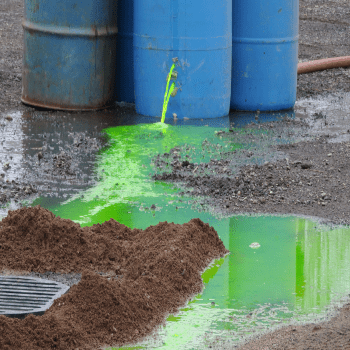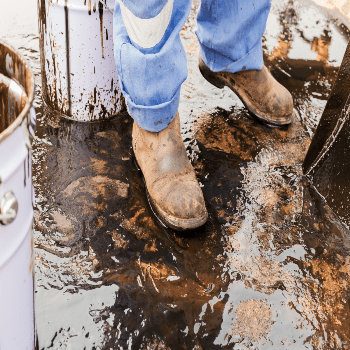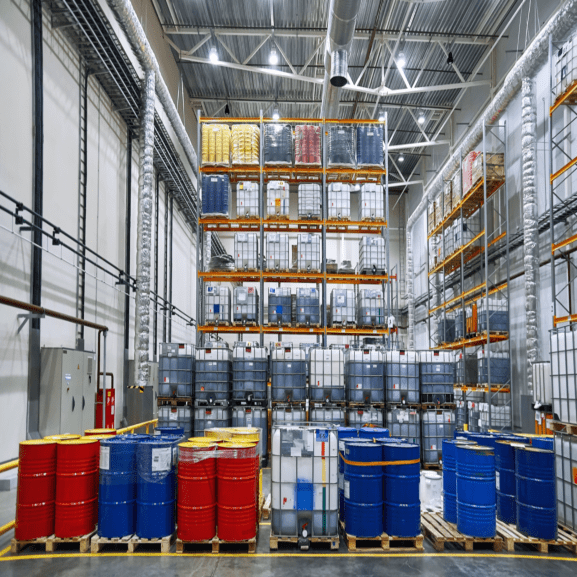Construction sites are dynamic environments where spills of various types—oil, fuel, chemicals, or water—are not uncommon. These spills can pose significant risks, including environmental contamination, workplace hazards, and legal liabilities.
Having the right spill kit on hand is essential to ensure swift and effective response, protecting both your workforce and the environment. In spill kits in Australia , businesses are increasingly recognising the importance of tailored solutions to meet the unique challenges of construction sites.
Let’s explore what spill kit you need for your construction site and how it can help you manage spills responsibly.
Understanding the Risks on Construction Sites
Construction sites present a variety of spill scenarios that require careful consideration. From machinery leaks to accidental chemical spills, each situation demands a targeted approach to ensure safety and compliance. Here’s an overview of the common risks:
Common Types of Spills on Construction Sites
- Oil and Fuel Spills:
Machinery and vehicles often use oils and fuels, making leaks and spills a frequent occurrence. These substances can contaminate soil and water if not contained promptly. - Chemical Spills:
Chemicals used in construction processes, such as solvents or adhesives, can pose serious health and environmental risks if spilled. - Water-Based Spills:
While less hazardous, water-based spills can still create slip hazards and disrupt workflow if not cleaned up quickly.
Understanding these risks is the first step in determining the type of spill kit your construction site requires.

Types of Spill Kits Available
Different spills require different types of absorbents and protective gear. Here’s a breakdown of the most common types of spill kits and their applications:
Oil and Fuel Spill Kits
- Key Features:
Designed specifically for hydrocarbon-based spills like oil, diesel, and petrol. These kits contain absorbents that repel water, ensuring they only soak up oil and fuel. - Applications:
Ideal for construction sites with heavy machinery, generators, or fuel storage areas.
Chemical Spill Kits
- Key Features:
Equipped with absorbents and protective gear suitable for corrosive or hazardous chemical spills. These kits often include specialised materials to neutralise certain chemicals. - Applications:
Essential for sites handling industrial chemicals, paints, solvents, or adhesives.
Universal Spill Kits
- Key Features:
Versatile kits designed to handle a wide range of spills, including oil, water, and mild chemicals. They are a cost-effective solution for general-purpose use. - Applications:
Suitable for construction sites with diverse spill risks or smaller-scale operations.
Hazchem Spill Kits
- Key Features:
Tailored for highly hazardous spills, these kits include advanced absorbents, protective gear, and disposal materials to ensure safety and compliance. - Applications:
Required for sites dealing with toxic or dangerous substances, such as industrial-grade chemicals or flammable materials.
Factors to Consider When Choosing a Spill Kit
Selecting the right spill kit for your construction site depends on several factors. Here’s how to make an informed decision:
Assessing Your Needs
- Type of Spills: Identify the types of spills most likely to occur on your site. For example, if your site uses heavy machinery, an oil and fuel spill kit may be a priority.
- Volume of Spills: Larger construction sites with higher spill risks may require bigger kits with more absorbents, while smaller sites may suffice with compact kits.
- Regulatory Requirements: Ensure the spill kit complies with local regulations and industry standards. Many construction sites in Sydney are required by law to have spill management plans and equipment in place.
Portability and Accessibility
- Ease of Transport: Choose kits that are lightweight and portable, allowing for quick deployment to spill sites across your construction area.
- Storage Location: Store spill kits in easily accessible locations, such as near machinery, fuel storage areas, or high-risk zones. Clearly label storage areas to ensure everyone knows where the kits are kept.
Benefits of Using the Right Spill Kit
Using the appropriate spill kit for your construction site offers numerous advantages:
- Minimised Downtime: Swift spill response reduces disruptions to workflow, keeping your project on schedule.
- Enhanced Safety: Proper spill management minimises the risk of slips, trips, and exposure to hazardous substances, ensuring a safer workplace.
- Environmental Protection: Containing spills prevents pollutants from entering ecosystems, preserving soil, water, and wildlife.
- Legal Compliance: Having the right spill kit ensures compliance with environmental and safety regulations, avoiding potential fines and reputational damage.
Best Practices for Managing Spills on Construction Sites
To maximise the effectiveness of your spill kit, follow these best practices:
- Training and Preparedness: Train all workers on how to use the spill kit properly. Conduct regular drills to ensure everyone knows their role during a spill incident.
- Regular Inspections: Check the spill kit periodically to ensure all components are intact and ready for use. Replace used or expired items immediately to maintain readiness.
- Act Quickly: Time is critical when managing a spill. Use the spill kit to contain and clean up the spill as soon as possible to minimise risks and damage.
Overcoming Challenges in Spill Management
While having the right spill kit is crucial, there are additional considerations to ensure effective spill management on construction sites:
Addressing Common Concerns
- Customisation Needs: Some sites may require customised kits with additional tools or absorbents to address unique risks. For example, sites in environmentally sensitive areas may need biodegradable absorbents.
- Over-Reliance on Kits: While spill kits are invaluable, larger spills may require professional assistance. Always assess the situation and seek expert help if needed.
- Accessibility Issues: Ensure spill kits are stored in visible and accessible locations. Delays in accessing the kit can exacerbate the spill’s impact.

The Future of Spill Management on Construction Sites
As awareness of environmental responsibility grows, especially in regions like Sydney, construction sites are adopting advanced spill management solutions to enhance safety and compliance.
Emerging Trends to Watch
- Smart Spill Kits: Integration of technology, such as sensors and alerts, may streamline spill response further.
- Eco-Friendly Materials: Biodegradable absorbents and sustainable disposal options are becoming more common, aligning with global sustainability goals.
- Regulatory Changes: Stricter environmental regulations may drive the adoption of more comprehensive spill management plans and equipment.
Preparing for the future involves investing in reliable tools like spill kits and staying updated on innovations in spill management.
Conclusion
Choosing the right spill kit for your construction site is not just a practical decision—it’s a responsible one. With the right tools in place, you can effectively manage spills, protect your workforce, and safeguard the environment. Whether you’re dealing with oil leaks, chemical spills, or water hazards, portable spill kits provide a versatile and reliable solution. As the adoption of spill kits in Sydney, Melbourne, and Brisbane continues to grow, it’s clear that their value extends far beyond convenience—they are a vital tool for ensuring safety, compliance, and sustainability. By investing in the appropriate spill kit and following best practices for its use, you can confidently face any spill-related challenge that arises on your construction site.





